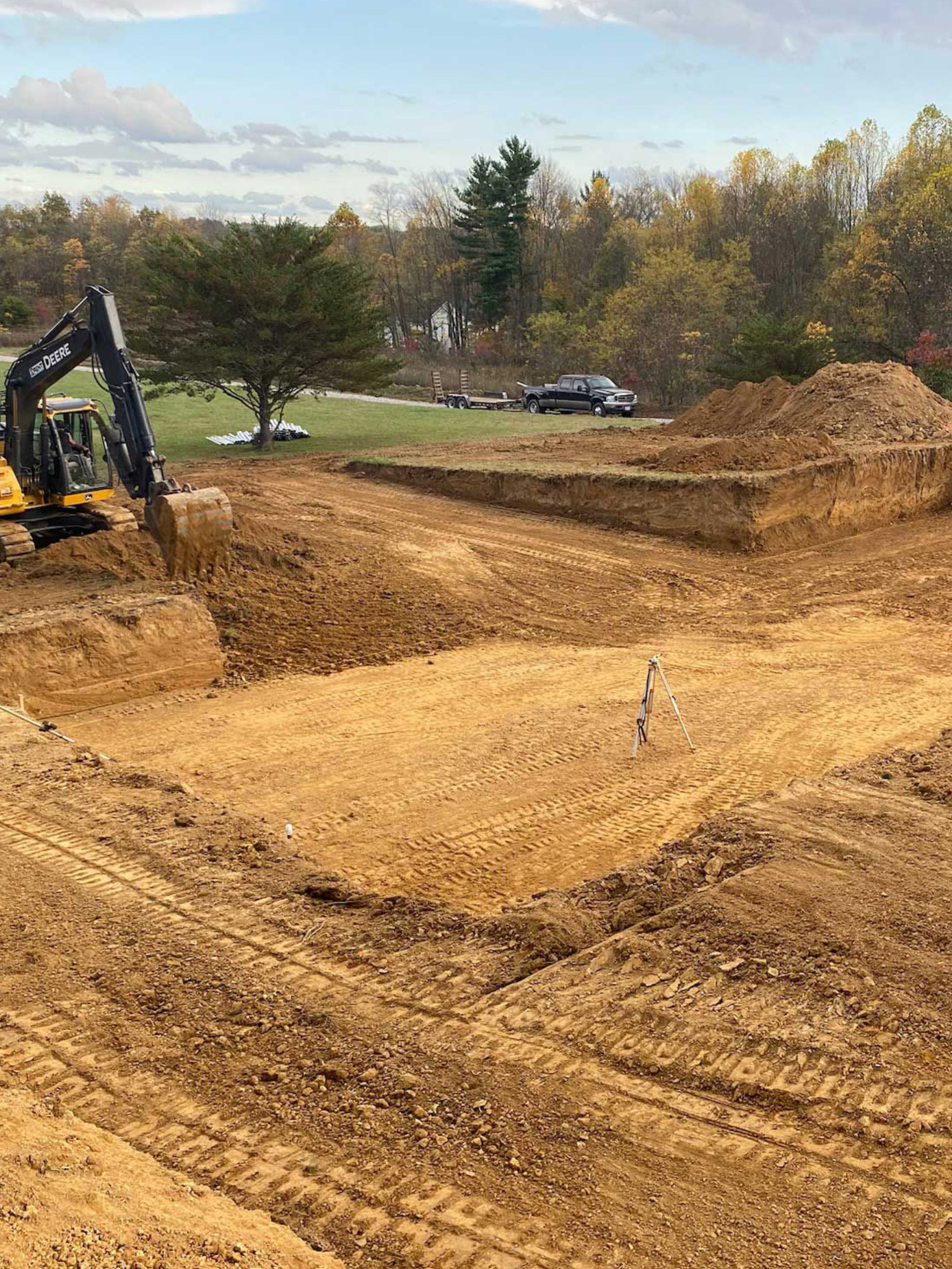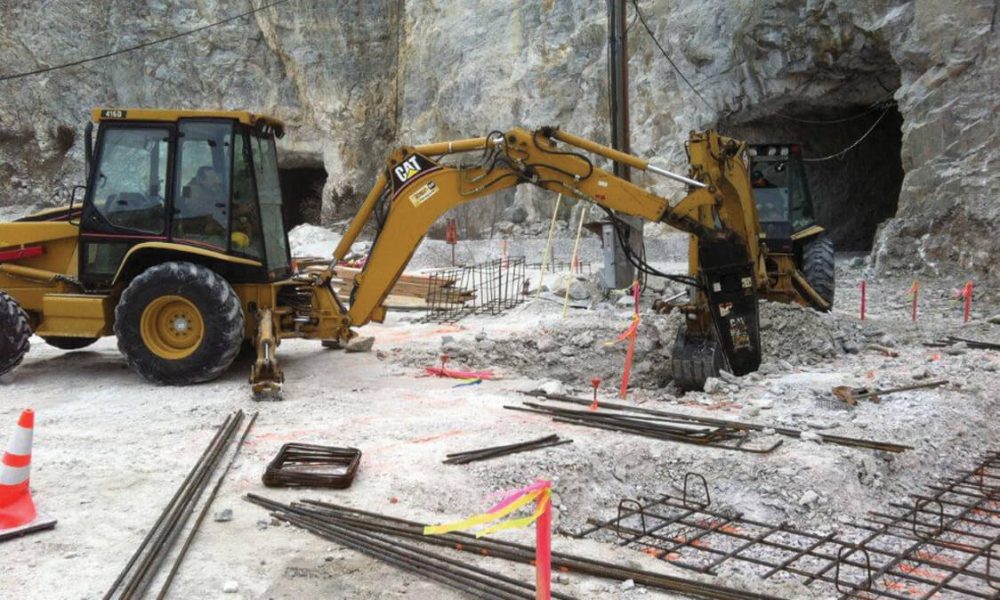Ideal Dump Truck Companies in Ohio - Top-Rated Dump Truck Providers
Ideal Dump Truck Companies in Ohio - Top-Rated Dump Truck Providers
Blog Article
Unveiling the Art of Excavation: Pro Tips for Safe and Effective Digging
As soil is turned and earth is moved, the complexities of excavation reveal themselves, requiring an eager understanding of tools, soil structure, safety and security procedures, and environmental factors to consider. The experience needed to browse these components successfully can mean the difference in between an effective excavation project and a possible disaster.
Value of Correct Equipment
To guarantee the safety and security and effectiveness of any excavation job, using the proper devices is vital. Excavation jobs differ in extent and intricacy, varying from tiny household landscaping tasks to massive construction undertakings.
These flexible machines come in numerous sizes to suit various job demands. Mini excavators are optimal for smaller jobs, while bigger excavators deal with much more comprehensive tasks successfully.
Aside from excavators, other important equipment consists of dump plates, vehicles, and excavators. Dump vehicles are vital for getting rid of and transferring excavated products, while trenchers are made use of for excavating narrow and deep trenches. Excavators master tasks that need pressing large amounts of soil or debris. By purchasing the proper devices, excavation projects can be finished securely, in a timely manner, and with precision.
Understanding Dirt Structure
An extensive grasp of dirt make-up is fundamental for carrying out excavation projects with accuracy and safety. Comprehending the different types of soil is crucial as it straight influences excavation techniques, devices option, and total task efficiency. Soil composition usually includes 4 major parts: sand, silt, clay, and natural issue. Each part has unique properties that affect how dirt responds to excavation processes.
Sand particles are the largest and provide excellent water drainage yet supply little cohesion. Silt particles are smaller than sand however bigger than clay, using modest drainage and cohesion. Clay fragments are the tiniest and supply high cohesion however poor water drainage. Organic issue, such as rotting plant material, affects dirt fertility and stability.
Before commencing excavation, performing soil tests to establish its structure and qualities is vital. This information assists in selecting the appropriate tools, carrying out precaution, and creating excavation approaches tailored to the specific soil problems - excavating ohio. By understanding dirt make-up, excavation experts can boost project end results while guaranteeing safety and security and adherence to best techniques
Safety Procedures and Protocols
Comprehending dirt composition is the foundation upon which precaution and procedures for excavation tasks are built, making sure the well-being of workers and the success of the undertaking. There are several crucial steps that need to be executed to mitigate dangers and protect against mishaps. when it comes to safety and security during excavation.
Primarily, before any kind of excavating commences, a comprehensive inspection of the website should be conducted to determine any potential threats such as below ground energies, unstable soil conditions, or nearby structures that could position a danger. It is important to have a qualified individual look after the excavation process to guarantee that all security methods are followed purely.
Furthermore, all employees included in the excavation should be properly trained in secure excavating practices and the appropriate procedure of tools. Personal protective tools (PPE) such as construction hats, high exposure clothing, handwear look at here covers, and safety boots should be put on whatsoever times to minimize the danger of injuries. lancaster excavation. Normal safety meetings and tool kit talks need to additionally be conducted to keep all employees educated about possible threats and enhance secure job methods. By sticking to these safety and security actions and methods, excavation tasks can be finished effectively and without event.
Efficient Excavation Preparation
When embarking on an excavation project, thorough preparation is crucial to ensure performance, security, and successful outcomes. Effective excavation preparation involves several key steps that are important for the smooth implementation of the job.
When the website evaluation is complete, the following step is to create a clear timeline and routine for the excavation activities. This includes establishing the sequence of tasks, devices needs, and manpower allotment. Appropriate organizing helps prevent delays and makes sure that the task remains on track.

In addition, interaction amongst all group participants is paramount throughout the preparation stage. Clear instructions, normal updates, and effective coordination are important for a successful excavation job. By spending time and initiative in thorough preparation, excavation groups can significantly boost productivity, lessen threats, and attain successful results.

Managing Environmental Factors To Consider
With increasing emphasis on ecological sustainability in building methods, handling ecological factors to consider has actually become an essential element of excavation projects. Excavation tasks have the potential to affect the surrounding environment with dirt disintegration, debris drainage, habitat disturbance, and contamination of water sources. To alleviate these risks, it is important to execute ideal methods that focus on environmental security.

Furthermore, proper waste management is essential to stop dirt and water contamination. Applying procedures for the disposal of dangerous materials, recycling of waste products, and minimizing making use of dangerous chemicals can significantly decrease the environmental impact of excavation projects. By incorporating these methods right into excavation planning and execution, construction companies can guarantee that their projects are not only risk-free and effective yet also environmentally responsible.
Final Thought
Finally, mastering the art of excavation calls for a detailed understanding of proper equipment, dirt structure, precaution, and efficient planning. By adhering to these standards and thinking about ecological aspects, excavations can be carried out safely and successfully. It is vital to prioritize safety and performance in every excavating project to ensure effective end results.
As soil is transformed and earth is relocated, the intricacies of excavation disclose themselves, requiring a keen understanding of equipment, dirt composition, safety and security procedures, and environmental factors to consider.To make sure the safety and effectiveness of any kind of excavation project, making use of the appropriate devices is extremely important.An extensive understanding of soil structure is basic for performing excavation tasks with precision and security. Recognizing the different types of dirt is crucial as it straight influences excavation try this website methods, tools option, go to the website and overall job performance. By understanding soil structure, excavation specialists can boost project end results while ensuring security and adherence to ideal techniques.
Report this page